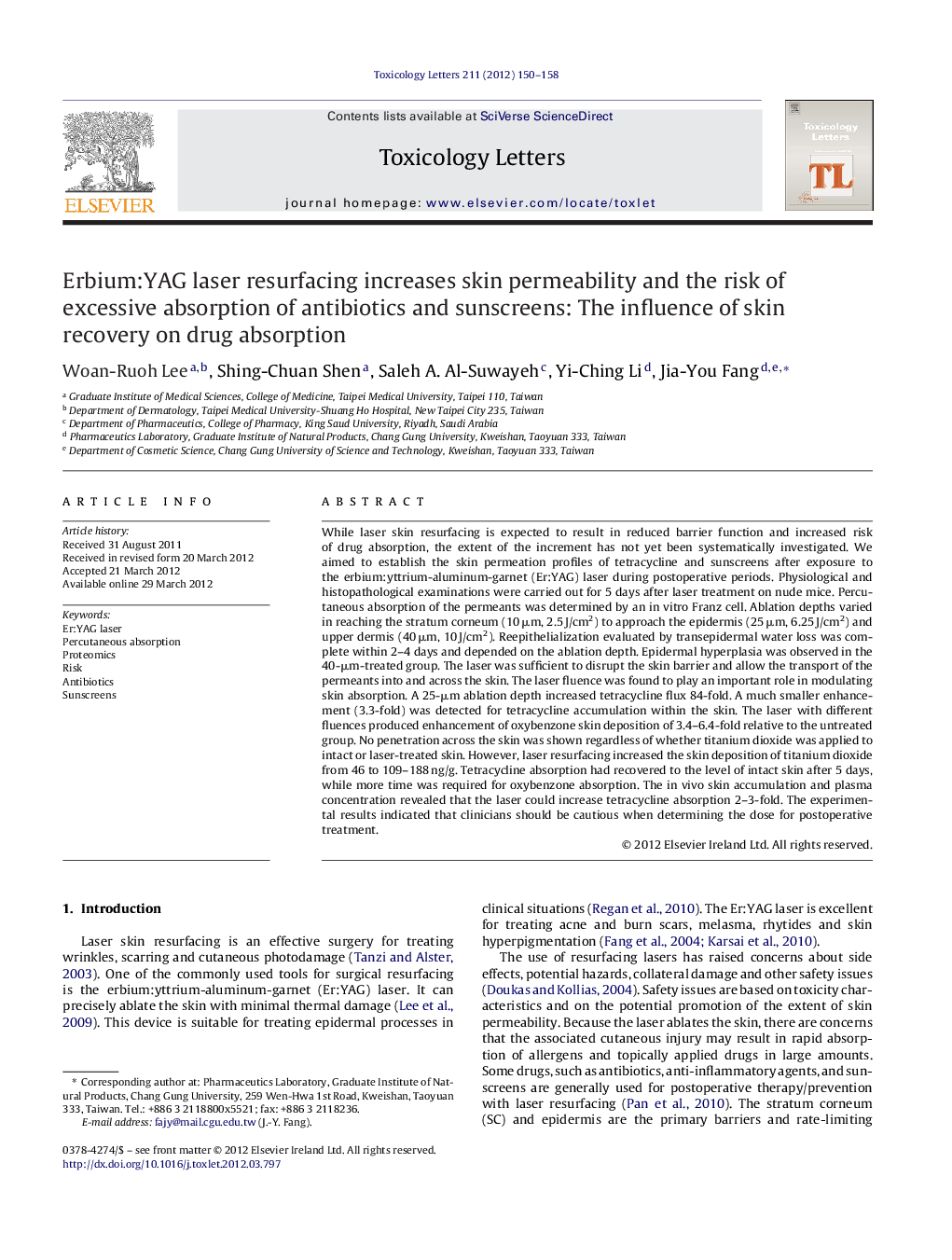| کد مقاله | کد نشریه | سال انتشار | مقاله انگلیسی | نسخه تمام متن |
|---|---|---|---|---|
| 2599585 | 1133219 | 2012 | 9 صفحه PDF | دانلود رایگان |

While laser skin resurfacing is expected to result in reduced barrier function and increased risk of drug absorption, the extent of the increment has not yet been systematically investigated. We aimed to establish the skin permeation profiles of tetracycline and sunscreens after exposure to the erbium:yttrium-aluminum-garnet (Er:YAG) laser during postoperative periods. Physiological and histopathological examinations were carried out for 5 days after laser treatment on nude mice. Percutaneous absorption of the permeants was determined by an in vitro Franz cell. Ablation depths varied in reaching the stratum corneum (10 μm, 2.5 J/cm2) to approach the epidermis (25 μm, 6.25 J/cm2) and upper dermis (40 μm, 10 J/cm2). Reepithelialization evaluated by transepidermal water loss was complete within 2–4 days and depended on the ablation depth. Epidermal hyperplasia was observed in the 40-μm-treated group. The laser was sufficient to disrupt the skin barrier and allow the transport of the permeants into and across the skin. The laser fluence was found to play an important role in modulating skin absorption. A 25-μm ablation depth increased tetracycline flux 84-fold. A much smaller enhancement (3.3-fold) was detected for tetracycline accumulation within the skin. The laser with different fluences produced enhancement of oxybenzone skin deposition of 3.4–6.4-fold relative to the untreated group. No penetration across the skin was shown regardless of whether titanium dioxide was applied to intact or laser-treated skin. However, laser resurfacing increased the skin deposition of titanium dioxide from 46 to 109–188 ng/g. Tetracycline absorption had recovered to the level of intact skin after 5 days, while more time was required for oxybenzone absorption. The in vivo skin accumulation and plasma concentration revealed that the laser could increase tetracycline absorption 2–3-fold. The experimental results indicated that clinicians should be cautious when determining the dose for postoperative treatment.
Figure optionsDownload as PowerPoint slideHighlights
► Comprehensive data assessing excessive drug absorption by laser were established.
► Caution should be exercised when administering topical drugs to resurfacing skin.
► A reduction in the therapeutic or preventive dose of drugs/sunscreens is required.
Journal: Toxicology Letters - Volume 211, Issue 2, 1 June 2012, Pages 150–158